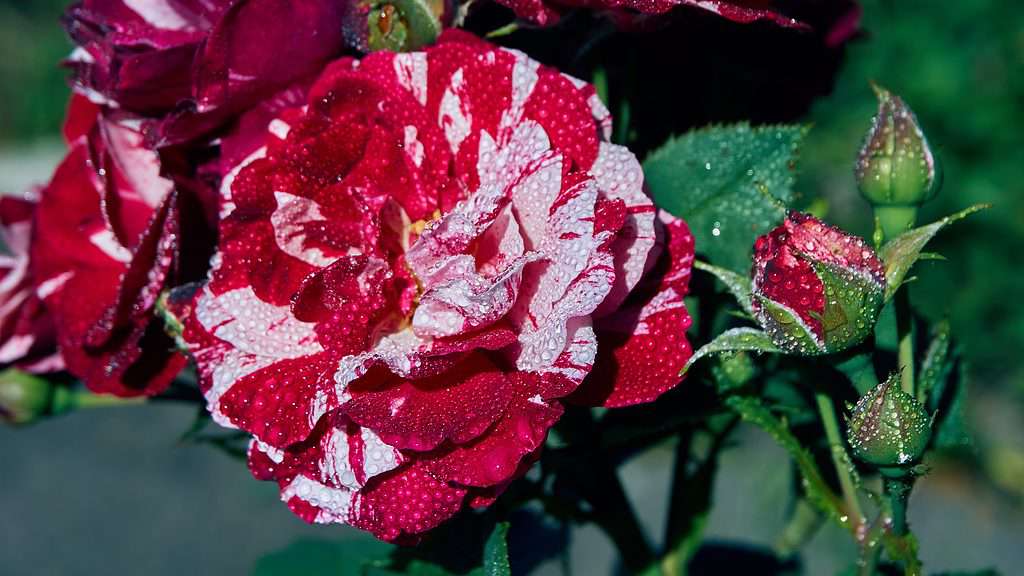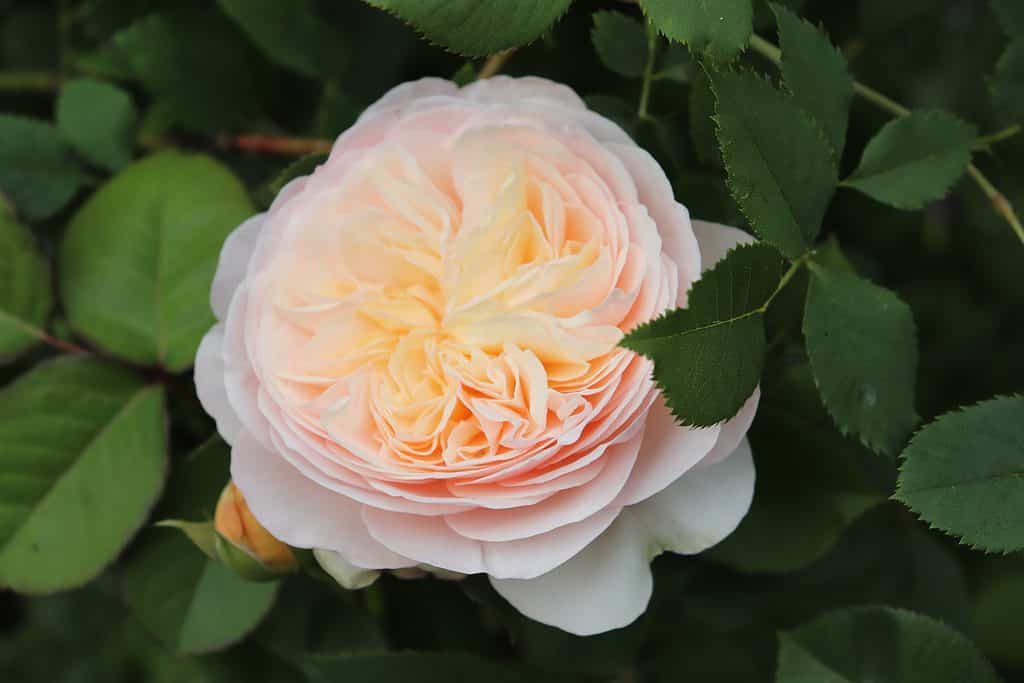Roses are ideal for various events or landscaping projects since they instantly infuse a space with color, make lovely gifts for loved ones, and look exquisite when planted in a garden. Additionally, there is a variety to fit practically any taste and several less well-known varieties, making them a very adaptable flower. Out of these varieties, there are a few rare roses worth knowing.
If you’ve already spent some time caring for roses and know your way around maintaining them, it might interest you to know that many types of ultra-rare rose varieties are out there. In this guide, we’ll look at some rare roses in the rose enthusiast world, so you can add some special flare to your garden.
Why Should I Grow Rare Roses?
You might not consider roses to be scarce when you think about them. Aren’t all rose varieties in abundance? Commercially cultivated roses are simple to get at your neighborhood florist or even the grocery store. But there is a community of collectors and preservationists working hard to preserve rare roses despite a number of obstacles like commercial trends, illness, pests, and climate change.
Many individual gardeners cultivate unusual roses and often exchange them with other collectors to help conserve them. Thus, you may participate in an effort to prevent the extinction of these unique rose varietals by merely cultivating them and sharing them with others. How cool is that?
Félicité Parmentier Rose
Botanical Name: Rosa ‘Felicite Parmentier Alba’
The Félicité Parmentier rose is a vintage rose with a very feminine and gentle appearance. It is a historic breed that Louis-Joseph-Ghislain Parmentier hybridized before 1834. Pale pink tones with white edgings make up this rose’s petals. The blooms have a diameter of less than two inches. They have a light cup and produce clusters of flowers. Typically, they contain over 40 petals. However, the number of petals on a Félicité Parmentier rose can reach as high as 120. As a result, it may not appear anything like the other rare roses on this list. For a plant like this to thrive healthily, full sunlight and wet, well-draining soils are desirable. It can, however, put up with some bad soil and shade.
Papageno Rose

The Papageno rose (pictured) has extremely rare mottling on its petals.
©TroEv/Shutterstock.com
Botanical Name: Rosa ‘Papageno’
Samuel Darragh McGredy IV first bred this lovely rose variety in 1989. It has two tones and is shaped like a hybrid tea. Given how well it competes with other rose species, its uncommon coloration makes it the perfect choice for individuals who want to stand out from the crowd.
Between three and four feet tall, this lovely rose has a light perfume and can grow to be quite large. It needs winter weather protection and spring trimming to thrive. Given that it is one of the brighter and more enigmatic varieties, giving a loved one is a great choice. In a bouquet, either by itself or in combination with other compatible flowers, it forms a beautiful cut rose. Expect this rose to grow up to four feet tall and grow it in USDA hardiness zones seven and up.
Hocus Pocus Rose
Botanical Name: Rosa ‘Hocus Pocus’
Another stunning striped rose that is hard to find is the Hocus Pocus rose. It features stripes of rich burgundy and lemon-yellow color and silky texture. A fully blown flower has 26 to 40 petals and a bloom size of around two to three inches. It blooms in the spring, summer, and fall and needs full sunlight. It blooms in bursts as the seasons change.
W. Kordes & Sons developed this specific cultivar in 2000. It is Black Beauty’s sport. It is not a reliable sport, though, and it could return to being similar in appearance to the Black Beauty variety. Therefore, the yellow stripes on the blossoms might not be present in your specific plant. The Hocus Pocus rose is a well-liked option for cut roses because of its distinctive hue. A bouquet’s overall appeal is enhanced by even one bloom. This uncommon breed is hard to find, so don’t expect to get your hands on this variety easily.
Nostalgie Rosa
Botanical Name: Rosa ‘Nostalgie’
A stunning two-toned rose, Nostalgie has deep crimson outer petals and a delicate, white center. The rose is a hybrid tea, which Hans Jürgen Evers first presented in 1995. Early summer, late summer, and early to mid-autumn are the blooming seasons for this species of rose. It has double blooms that can include up to 40 petals and a lovely aroma.
Juliet Rose

The Juliet rose (pictured) is renowned for its dense petal count and soft, vibrant colors.
©Galina Bolshakova 69/Shutterstock.com
Botanical Name: Rosa ‘Juliet’
One of the rare roses in the world is Rosa Juliet, often known as Sweet Juliet or just the Juliet rose. It is a rose with a large cup and unique petals. The medium-sized bloom measures between two and three inches. It is incredibly full and has almost 40 petals. This gorgeous flower has a very wonderful, energizing aroma and blooms in tiny bunches. David Austin, a well-known British breeder, created Juliet Rose in 1989. It has Juliet Capulet’s name from the famed Shakespeare play. This really unusual rose has a powerful aroma and an apricot color. The only way to cultivate it is as a bush rose.
Rainbow Sorbet Rose
Botanical Name: Rosa ‘Rainbow Sorbet’
This floribunda rose was developed in 2004 and is descended from the Playboy rose variety. This stunning rose may grow up to five feet tall and has yellow flowers with pink borders. It is a fantastic choice for anyone wishing to make an investment in a hardy rose because it can defy most illnesses and endure colder climates. Although it blooms from late spring to early fall, this rose doesn’t have a strong perfume. In USDA hardiness zone nine, this rose should flourish and grow to a height of around five feet.
Blue Roses
Botanical Name: Varies
A blue rose is a plant of the Rosaceae family that has blue-to-violet petals rather than the more typical red, white, or yellow petals. To be honest, there is no such thing as a blue rose. According to legend, the first blue rose was a white rose that had been painted or colored blue. However, blue roses cannot be grown or genetically modified. In 2004, scientists employed genetic engineering to produce roses that naturally grow the blue pigment delphinidin. It was nonetheless referred to as a blue rose, even though the hue of the final product was more lilac than blue. The closest scientists and rose breeders can get is a more violet hue. If you see a bright blue rose, it is likely just a white rose variety that has been dyed blue.
Suntory Blue Rose Applause Rose
Botanical Name: Rosa ‘Applause’
The blue rose is the world’s rarest rose, as indicated in the previous section. Blue flowers have long been associated with myth and folklore. It frequently appears in both literature and art. However, no blue roses can be found in the wild because delphinidin, a necessary blue pigment, is absent in rose plants.
Scientists have spent years perfecting blue flowers, which stand for mystery and the ambition to achieve the unachievable. Most of these efforts fell short. Together with the Australian business Floeigene, the Japanese corporation Suntory created the first “blue” genetically modified rose Applause in 2004. This rose effectively incorporated the blue pigment delphinidin into the white roses.
The petals’ hue is more like mauve or lavender than genuine blue. To get to this conclusion, the experts conducted research for around 13 years. Suntory introduced Applause to the market in 2009, and it quickly became quite expensive and extremely rare. To make pure blue roses, experts at Suntory and other institutions continue their work. However, it is quite unlikely that a true blue rose will ever be created without using blue dyes.
Osiria Rose
Botanical Name: Rosa ‘Osiria’
The petals of this hybrid tea rose to have an unusual coloration, being velvety crimson at the front and white at the base. Compared to other rose varieties, this specie’s blossoms are bigger, and it was developed in 1978. It’s a terrific plant for the serious gardener since, with proper care, it blooms every year. It also has a stronger perfume, making it perfect for anyone who wants to add a musky scent to their house or garden. Dark crimson petals have the potential to turn, which stands out beautifully against the silver background.
Busy Bee Rose
Botanical Name: Rosa ‘Busy Bee’
Choose the rare Busy Bee rose if you’re planting in a tiny area or container. This little hybrid tea has excellent cold tolerance and can withstand the heat and humidity of the summer. The blossoms begin as apricot, peach, and coral, then progressively turn lighter and hotter pink as they go closer to the margins. Maintain deadheading the plants for optimal effects, and you’ll have an absolutely stunning little rose.
Princess Alexandra of Kent Rose

Princess Alexandra of Kent roses (pictured) are a little easier to find in the United Kingdom and Europe compared to the United States.
©LesiChkalll27/Shutterstock.com
Botanical Name: Rosa ‘Princess Alexandra of Kent’
The Princess Alexandra of Kent rose, so named after Queen Elizabeth’s cousin, has enormous pink flowers encircled by an outer ring of delicate pink petals. Before the blooms fade, the tea rose perfume transforms into a lemon scent with overtones of blackberry. For its extraordinarily enormous blooms, which can have up to 130 petals per flower, try growing this David Austin rose in your garden. It has a strong tolerance for heat and humidity and is one of the most fragrant English roses. Full-petaled and deeply cupped, the enormous brilliant pink blossoms are striking. Despite their size, they are never awkward since they are kept perfectly still on a well-rounded bush.
Claude Monet
Botanical Name: Rosa ‘Claude Monet’
This hybrid tea, known as the Claude Monet rose, features double blossoms with light pink and yellow tones that frequently occur in stripes and streaks. It has a light to robust fruity aroma and instantly gives color to simple house furnishings or lush foliage-filled gardens. This lovely rose thrives in USDA hardiness zones six and up. Expect this unique rose to reach up to three feet tall.
All of these rare roses might be a bit difficult to find. You likely won’t find them growing or as seeds at your local nursery. However, a deep dive online could yield some results, depending on your location and your budget. Regardless, these rare rose varieties are absolutely stunning and will add some delightful glamor to your garden if you can find them!
Summary of 12 Rare Types of Roses
| Number | Rare Rose |
|---|---|
| 1 | Félicité Parmentier Rose |
| 2 | Papageno Rose |
| 3 | Hocus Pocus Rose |
| 4 | Nostaglie Rose |
| 5 | Juliet Rose |
| 6 | Rainbow Sorbet Rose |
| 7 | Blue Roses |
| 8 | Suntory Blue Rose Applause Rose |
| 9 | Osiria Rose |
| 10 | Busy Bee Rose |
| 11 | Princess Alexandra of Kent Rose |
| 12 | Claude Monet |
The photo featured at the top of this post is © iStock.com/courtyardpix
Sources
- NCSU Staff, Available here: https://plants.ces.ncsu.edu/plants/rosa/
- Sheryl Geerts, Available here: https://www.bhg.com/gardening/flowers/roses/ultimate-rose-care-guide/
- Alvin Goodley, Available here: https://rarest.org/nature/roses
FAQs (Frequently Asked Questions)
What is the rarest rose color?
The rarest rose color would be blue.
Do rainbow-colored roses exist?
Rainbow roses do exist, but their petals are colored artificially and do not exist in nature.
What is the most valuable rare rose?
The Juliet rose is the most expensive rose even cultivated, set at about $5 million.
Thank you for reading! Have some feedback for us? Contact the AZ Animals editorial team.






